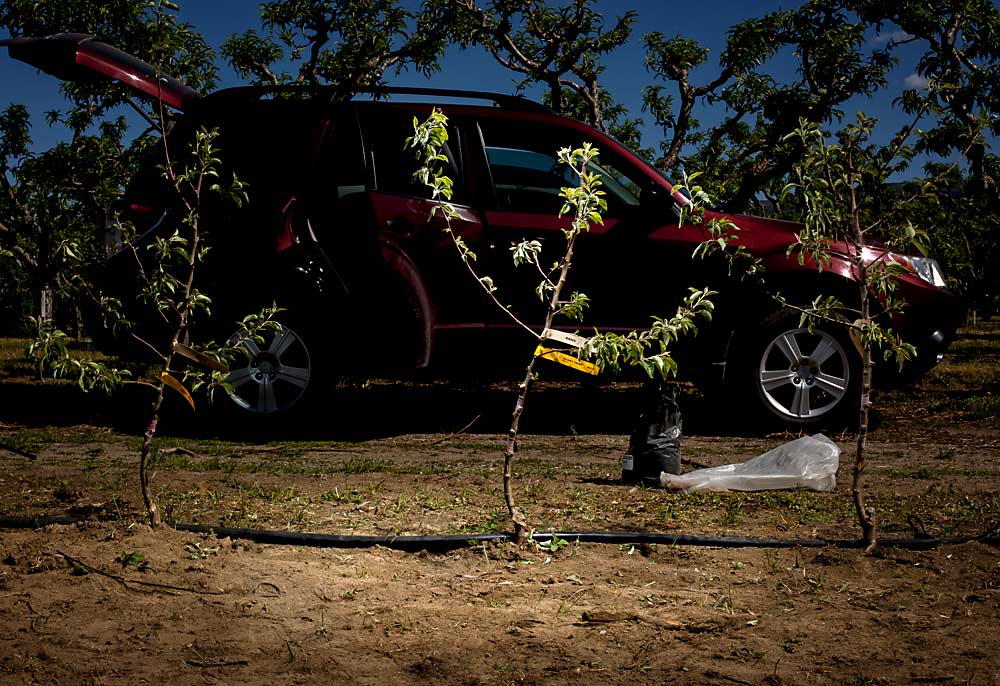
Researchers have been unable to conclusively blame a virus for a mysterious tree decline in certain strains of Honeycrisp cultivars on Geneva 935 rootstocks, first reported in 2016.
Several viruses are present in the trees, for sure, but they found no clear causal connection between any of those viruses and the symptoms, which include dieback in the limbs and visible necrosis in the trunk.
“It doesn’t appear from the evidence that it’s any virus that we know of causing it,” said virologist Scott Harper of Washington State University.
Growers have been flummoxed by a lack of growth and sick-looking leaves in certain strains of Honeycrisp grafted to G.935, one of a line of rootstocks from Cornell University heralded for their precocity and resistance to pests and diseases. Some growers have had to rip out entire blocks, while others grew as expected.
Harper led a $116,000 inquiry into potential viral culprits in 2018 and 2019, funded by the Washington Tree Fruit Research Commission. He and colleagues took samples of both symptomatic and asymptomatic trees, screened directly for nine viruses and sequenced for several more, said Harper, director of the Clean Plant Center Northwest, located at WSU’s Irrigated Agriculture Research and Extension Center in Prosser.

While he found no direct link, it is possible viruses are playing a secondary role in harming trees that are sick for some other reason or weakening trees for another illness that researchers haven’t identified, Harper said. He recommends growers manage for overall tree health to prevent the decline, instead of focusing on viruses.
A trial by the Northwest Nursery Improvement Institute at a Wenatchee nursery was inconclusive, said Bill Howell, the group’s manager. Meanwhile, other nurseries are running some of their own trials.
“We’re kind of at the same place,” Howell said. “We couldn’t tie it to a virus, but I guess we’re not ruling it out either.”
—by Ross Courtney
Related:
—Researchers put virus theory to trial in G.935 decline
—Problematic pairings with Geneva 935






Leave A Comment